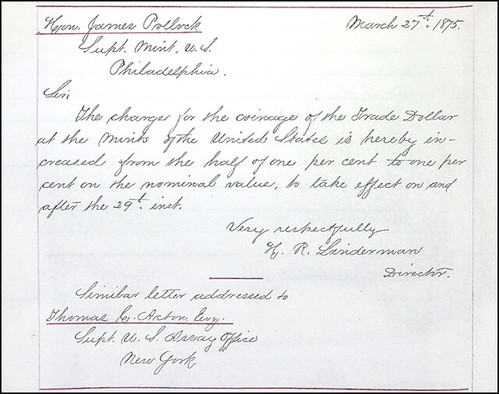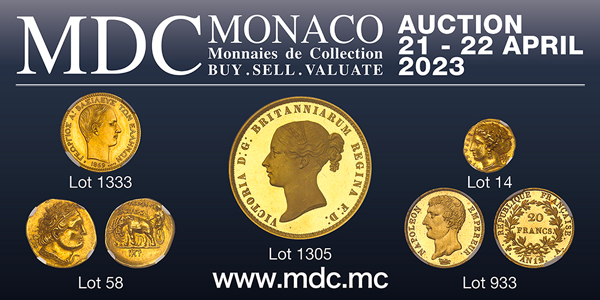
PREV ARTICLE
NEXT ARTICLE
FULL ISSUE
PREV FULL ISSUE
MINING MINT ARCHIVES FOR RESEARCH GOLDResearcher Roger Burdette does what everyone researching the history of U.S. coinage OUGHT to do, but rarely actually does - look for primary documentation in the records of the U.S. Mint. The National Archives holds a gold mine of information, but few expend the considerable time and effort required to get it. Roger's two-part series on CoinWeek explores why the chore is so difficult and how he goes about tackling the problem. Here's an excerpt - see the complete articles online. -Editor The National Archives and Records Administration – NARA for short – holds millions of pages of letters, accounts, orders, design information and daily records, yet out of this mass of material, modern books only scrape the surface. To read them, one has to visit a NARA facility, identify what is to be examined, wait for staff to pull the volumes or file boxes, and then read thousands of individual pages that are, at best, in chronological order. At worst, the pages resemble something swept off a desk and dumped in a box.
A Despite its excellence and years of work, NNP has barely tapped the true mass of archival U.S. Mint documents. Every time I look at a volume or file box, I find something new and interesting – often never before seen by any living person. It's an amazing feeling to realize that I might be the first person to read that letter since it was sent 150 or 200 years ago! The second problem is deciphering handwriting - a task that computers (and increasingly more and more humans) have a hard time with. -Editor During all of the 18th century and most of the 19th, all routine documents and letters were written in longhand (cursive) manuscript. Printing presses turned out official documents in type-set versions, but everything started in handwritten text. Flowing, or longhand, writing is much faster than block printing words. For generations it was the standard of literate communication and part of the standard public school curriculum beginning in third grade. Now, few children learn cursive or longhand writing. With few modern users able to read and understand longhand, the content of original and digital documents remains hidden. It is as if there were a code substituting arbitrary symbols for English language letters and numbers. Without some sort of magic decoder ring from a box of corn flakes, documents were nothing but gibberish and squiggles. The most reliable solution is transcription. To get a good transcription, we rely on people who can read longhand manuscript and convert handwriting into standard alphanumeric characters to display on a computer screen or print. The converted words and numbers also give us the ability to use software to search documents for desirable content. If the search-and-find program is good enough, then we can quickly locate any word, combination of words, quoted phrase, or topic of interest. Thus, it is not enough to digitize old U.S. Mint documents. That's just the first step. The content, and the information hidden therein, is revealed only when we have someone transcribe handwritten text into modern human- and machine-readable characters. Roger's efforts are heroic, and will pay dividends for the hobby and science of numismatics for generations to come. It's the one major element of the Newman Numismatic Portal I've not had even a minor part in. Thanks, Roger! But one person can only make so much of a dent in the massive Mint archives. Who will come along to roll up their sleeves and tackle what Roger cannot? -Editor
To read the complete articles, see:
Wayne Homren, Editor The Numismatic Bibliomania Society is a non-profit organization promoting numismatic literature. See our web site at coinbooks.org. To submit items for publication in The E-Sylum, write to the Editor at this address: whomren@gmail.com To subscribe go to: https://my.binhost.com/lists/listinfo/esylum All Rights Reserved. NBS Home Page Contact the NBS webmaster 
|

